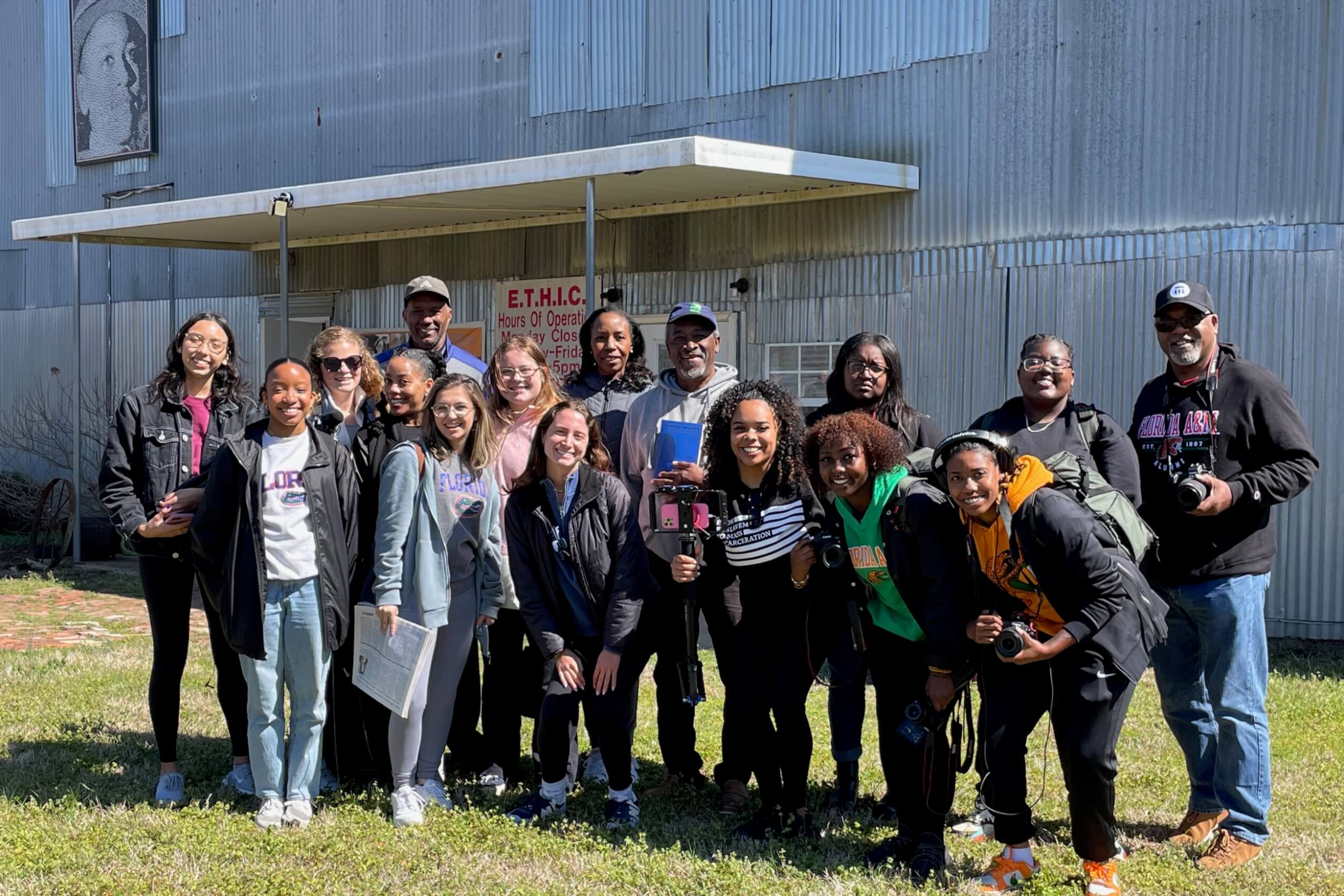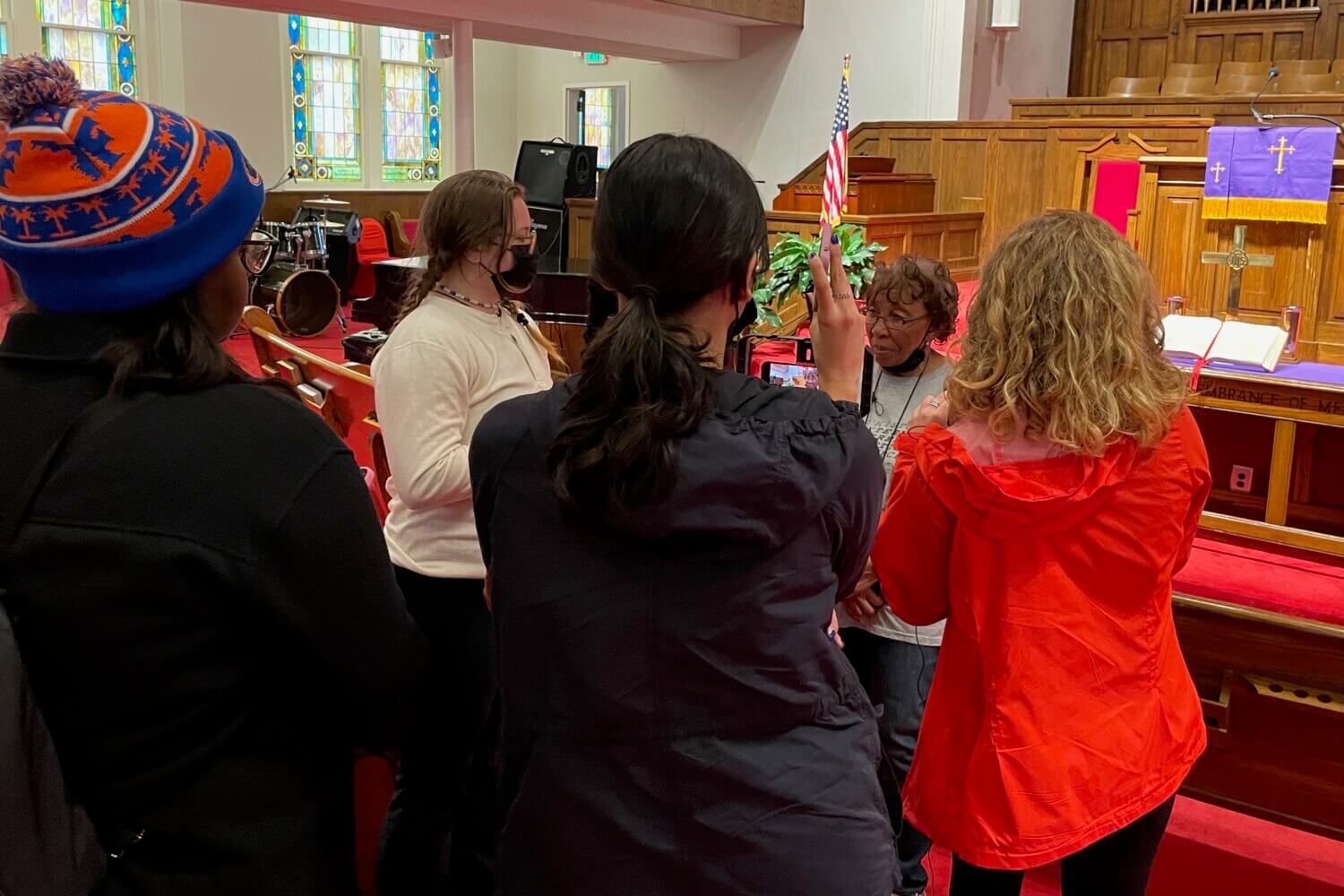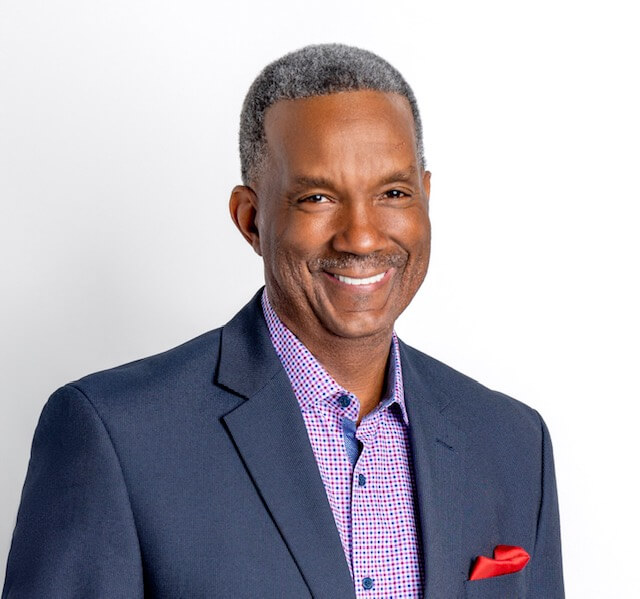Sixty years ago this week, in a pivotal year during the Civil Rights Movement, two moments helped to advance the fight against segregation and mistreatment of Black Americans.
On June 11, 1963, with many southerners still resisting school desegregation, Gov. George Wallace stood defiantly in a schoolhouse doorway in a failed bid to keep two Black students from entering the University of Alabama in Tuscaloosa.
The next day, just hours after President John F. Kennedy’s nationally televised civil rights address, a gunman killed activist Medgar Evers outside his home in Jackson, Mississippi.
These and other key movement events helped lead me to create an intercollegiate experience in which journalism students spent their spring break reporting from the U.S. Civil Rights Trail.
Seven from the University of Florida and four from Florida Agricultural and Mechanical University joined me, my wife and two other advisers for an eight-day, 2,800-mile trip through Alabama, Arkansas, Georgia, Mississippi and Tennessee. We dubbed ourselves UFxFAMU1963.

Students from the University of Florida and Florida A&M University share a moment in Glendora, Mississippi, with Johnny B. Davis (center), the village’s mayor and founder of the Emmett Till Historic Intrepid Center. The museum was once a cotton gin owned by one of Till’s abductors. (Courtesy: Herbert Lowe)
Some have asked about our mindset given that critics in Florida and elsewhere say schools shouldn’t teach anything about our nation’s past that may cause anyone discomfort. To be clear, my job is to ensure that my students are prepared to cover the world in all of its complexities.
All children learn about the Rev. Martin Luther King Jr.’s “I Have a Dream” speech in August 1963. But the UFxFAMU1963 students didn’t know of the Children’s Crusade, in which police in May of that year — using fire hoses, batons and dogs — arrested hundreds of teenagers protesting for civil rights in Birmingham, Alabama. At least one student knew that four girls died in the Sixteenth Street Baptist Church bombing, also in Birmingham, later that summer.
Surprisingly, they didn’t know about Emmett Till’s murder in the Mississippi Delta in 1955 or that the Little Rock Nine integrated Central High School in Arkansas in 1957. They also didn’t know of the Bloody Sunday attack in Selma, Alabama, in 1965, or about the Black sanitation workers strike in Memphis, Tennessee, that led King to where he was assassinated in 1968.
Two books helped to ready UFxFAMU1963: “The Race Beat: The Press, the Civil Rights Struggle and the Awakening of a Nation,” by Gene Roberts and Hank Klibanoff, and “U.S. Civil Trail: A Traveler’s Guide to the People, Places and Events That Made the Movement,” by Deborah Douglas. (Here’s hoping the critics don’t try to ban these books from schools, too.)
With our audiovisual equipment and luggage in a rented 15-seat passenger van, we visited about a dozen repositories of Black history, including the Legacy Museum: From Enslavement to Mass Incarceration, in Montgomery, Alabama; Mississippi Civil Rights Museum in Jackson; National Civil Rights Museum at the Lorraine Motel in Memphis; and the King Center in Atlanta.
We also stopped at the Emmett Till Intrepid Center in Glendora, Mississippi, as well as what’s left of the grocery store where the 14-year-old boy offended a white woman, and the courthouse in nearby Sumner where an all-white jury acquitted his alleged killers of murder charges. (They later confessed to the crime in a magazine article for which they were both paid.)
We also went to, among other places, the Medgar and Myrlie Evers Home National Monument; Foster Auditorium, the site of Wallace’s schoolhouse stand; Little Rock Central High School; the Edmund Pettus Bridge, where Bloody Sunday happened in Selma; and the Sixteenth Baptist Church and Kelly Ingram Park, where the Children’s Crusade occurred in Birmingham.

Four University of Florida students interview a tour guide inside the Sixteenth Street Baptist Church in Birmingham, where four girls were killed in a Sunday morning bombing on Sept. 15, 1963. (Herbert Lowe)
Along the way, we met many fellow travelers also taking in all of this history, as well as interesting people who helped to make it happen during the 1960s. I so much appreciated whenever these activists and historians put the current political climate into focus.
Take, for example, Scott Bridges, a retired University of Alabama professor and co-president of the Tuscaloosa Civil Rights History & Reconciliation Foundation, who connected UFxFAMU1963 with guest speakers in his city and in Birmingham.
“The problem, I believe,” Bridges said while we all stood where Wallace tried to preserve segregation on that momentous day 60 years ago, “is that if we’re not honest, if we don’t tell the true story of the past, then our conversations now are not going to help us.”
Our students cried as activist Olivia White, during a session in Birmingham, recalled not only playing the church piano at mass meetings at which King spoke in Alabama — but also having to protect youth choir members and her own family from segregationists who wanted to harm them.
“You have power in your hands to create,” White told the students. “You have power in your hands to change things. Don’t always film the pretty things. Film things that are not pleasant to the eye. Film the truth. It will set us free. And it’s going to make a difference.”
To its credit, UFxFAMU1963 stayed focused on reporting as taught in their journalism classes. In a resulting news website and 25-minute documentary, they speak of their spring break journey honestly and generationally, as student journalists, not politically or ideologically.
Brianna Luberisse, a FAMU senior graphic design major from West Palm Beach, said in the documentary that the group is now obliged to share what they witnessed.
“Don’t keep it to yourself,” Luberisse said. “Don’t just capture the moment with your eyes. Speak the words that you see, and share the knowledge that you learned with everybody else in the world, and your peers, your friends and your family — so that this information is not lost.”
All in all, it’s rewarding that these 11 students now know and value Black history so much more.
“The history I have learned along the U.S. Civil Rights Trail will stay with me for the rest of my life,” Gabriela Rodriguez, a UF senior journalism major from North Miami Beach, wrote in a reflection essay for our website. “I’m excited to share what I’ve learned with others and, hopefully, they, too, can learn from my experiences.”







